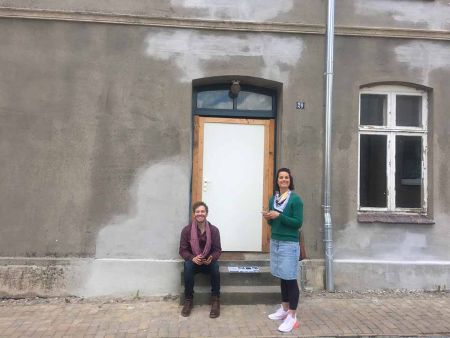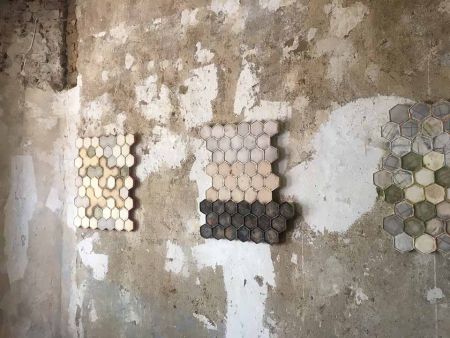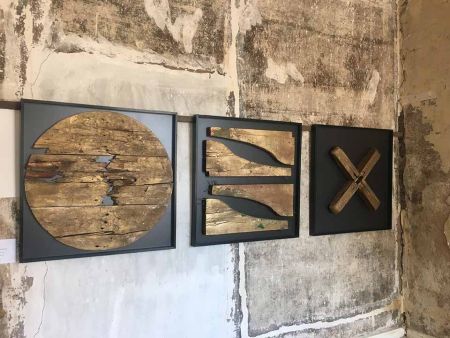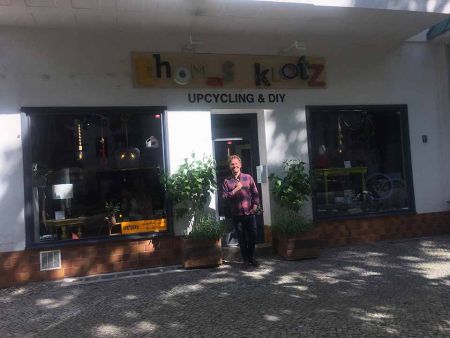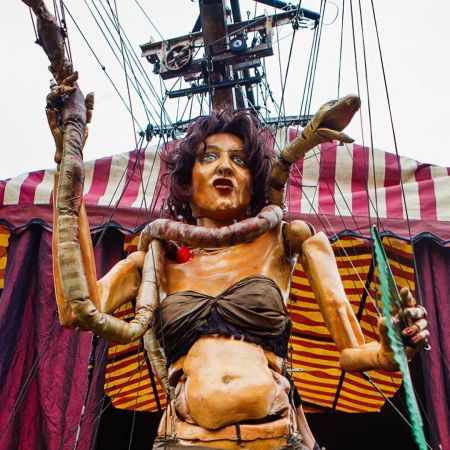Upcycling Art Award from Germany
In this first edition of the Upcycling Art Award from Germany, the following artists were selected as finalists: Kerstin Bruchhäuser, Jürgen Hohmann, Daniela Melzig, Ramona Seyfahrt, Eric Weiser, Gudrun Staiger & Rudi Beutinger, and Willi Reiche. They were selected through an online process and exhibited their works at the Zentrum für Zirkuläre Kunst (ZZK – Center for Circular Art) from May 22 to June 6. On May 29, the jury, consisting of Cora Knoblauch (art historian and critic, creator of the art and fairness program on Radio 1 Berlin), Thomas Klotz (artist and actor, Upcycling influencer with a program on German TV about upcycling and DIY), and Tanja Grass (founder and president of Drap-Art), gathered in the city of Lübz, along with Julia Theek (founder of the Gesellschaft für Zirkuläre Kunst (Society for Circular Art) and initiator of the Upcycling Art Award).
A first meeting and visit to the finalists’ exhibition took place on the afternoon of May 29. The jury began discussing their favorite pieces and the reasons behind their choices. On the morning of May 30, the jury made a second visit to the ZZK, completing the discussion and selecting the 3 winners by consensus. The winners are:
Ramona Seyfahrt with the piece Unbenannt – first prize
Kerstin Bruchhäuser with the piece Bojagi pink – second prize
Willi Reiche with the piece Every Brass I take – third prize
The three winners will exhibit their winning pieces at Drap-Art’22 in Barcelona.
After the jury session, well-known Radio 1 Berlin broadcaster Steen Lorenzen interviewed us for a podcast, which was aired on June 5, World Environment Day, the same day the winners were announced in a public ceremony at ZZK, with the Mayor of Lübz, other authorities, sponsors, collaborators, the jury, and participating artists.
On June 7, the exhibition was moved to Berlin, to the VKU Forum (https://vku-forum.de), where it will remain for almost a year. No inaugural event was held for the exhibition, either in Lübz or Berlin, due to health security measures, and therefore, there was no significant promotion or flyer design. The exhibition was mainly promoted through social media and podcasts. It is planned to hold a vernissage and complementary activities such as talks, workshops, and performances as part of the exhibition later on.
Objectives
✅ Create links with other artist organizations in Germany to strengthen Drap-Art’s international collaboration network.
✅ Initiate an exchange project for German and Catalan artists with the ZZK and the Gesellschaft für Zirkuläre Kunst.
✅ Create a link with the Lübzer Kunst Speicher Art Academy (Attic of Art in Lübz) and schedule courses with Catalan instructors there.
✅ Renew established ties with Kunst-Stoffe Berlin and the Haus der Materialisierung (House of Materialization).
✅ Reconnect with German artists with whom previous projects were done, such as Stephanie Senge.
✅ Establish contacts with new organizations and festivals, such as City Leaks in Cologne.

